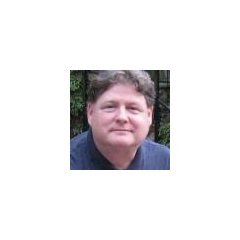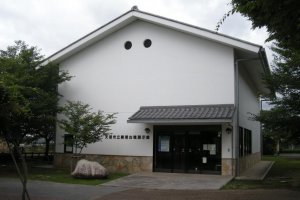In January of 1998 when reports of the discovery of 34 bronze mirrors (shinjūkyo) in the Kurozuka burial mound in Yanagimoto Village, Tenri City hit the newspapers and other mass media, a hornet’s nest of debate was stirred up regarding the location of Japan’s ancient legendary Yamatai kingdom.
As many readers are aware, in the Chinese historical sources known as the “Records of Wei” (compiled 290 C.E.) mention is made of 100 bronze mirrors being sent from Chinese Emperor Cao Rui as a present to Queen Himiko of the Yamatai Kingdom of Japan in 239 C.E. The burning question is, were these recently unearthed 34 mirrors some of the original mirrors that were presented to Queen Himiko? The debate was heated up, especially as the stakes of establishing the location the ancient kingdom of Japan are high. Hitherto, debate on the location of Japan’s ancient center had oscillated between Kyushu and Nara (Yamato). With the discovery of these Wei Dynasty Style mirrors dating to the 3rd century in Kurozuka burial mound, further strength has been provided to the Yamato theory as the location of Japan’s ancient Yamatai kingdom.
Red paint was also discovered lining the walls of the internal stone burial mound and the 34 mirrors had been placed along the inner walls, surrounding a wooden coffin that had rotted away. Jointly, the red color and mirrors were thought to ward off evil and ensure a safe passage to the other world. Other items in the burial mound included swords, weapons and armor.
The burial mound is a classic keyhole shaped mound with the entrance at the top (tate-ana shiki), as opposed to the side entrance style (yoko-ana shiki).
After the mirrors were excavated, they were removed to the Kashihara Archaeological Institute Museum and the burial mound was closed up. However, a very small, but user-friendly, museum 天理市立黒塚古墳展示館 (Tenri Municipal Kurozuka Burial Mound Exhibition Hall) was opened up on the site of the burial mound in 2002. Inside is an true-to-life replica of the burial mound at it was being excavated in 1997 and 1998. On the second floor of the museum one can examine exact replicas of the original 34 bronze mirrors that were discovered in the burial mound.
The museum is open from 9 a.m. to 5 p.m. six days a week and is closed on Mondays. When holidays fall on Mondays, the museum is closed on Tuesdays. Admission is free. There are free pamphlets explaining the Kurozuka burial mound and local area interest books for sale inside the museum, however, all publications are in Japanese. The displays of the contents of the mound and, especially the views of the interior when it was opened in 1997, provide valuable insight into burial mounds. The controversy regarding the location of the Yamatai Kingdom is far from over, and a visit to the burial mound and museum will provide an insight into the some of the belief patterns and those artifacts which people of the 3rd and 4th century valued.





























